Orchid: varieties, tips for choosing and growing

Orchid is an incredibly beautiful flower. It belongs to the orchid family, one of the oldest on our planet. The orchid family includes 750 genera, and the species number in the tens of thousands. They grow almost anywhere in the world, except for the poles. Although tropical latitudes are considered the ideal climate for them. Back in the 18th century, this flower made a splash, barely appearing in Europe. Then these flowers were incredibly expensive and were available only to royalty, and this overseas plant was grown exclusively in greenhouses.
Now this beauty is sold in any gardening store. It is given for the holidays, grown on windowsills, and it has become very affordable in terms of its cost for any amateur gardener.
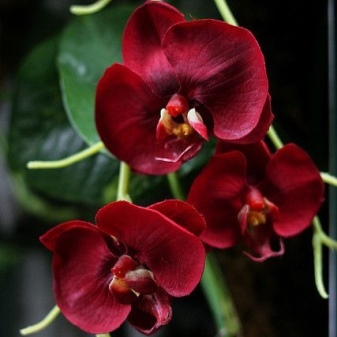
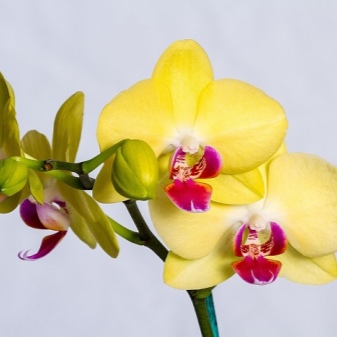
Peculiarities
South America is considered the homeland of the orchid. True, this place is also claimed by the southeast of Asia with its subtropical climate suitable for orchids. The ancestor of the indoor orchid Phalaenopsis is a local resident of just those places. The habitat in America and Asia is different for orchids. American representatives choose the jungle with its diffused light and moist soil, while Asian orchids grow near water bodies and on coastal rocks.
All orchids are divided into several groups according to their place of growth:
- epiphytic - growing on trees;
- letophytic - grow on rocks;
- terrestrial - grow in the ground, and sometimes underground.
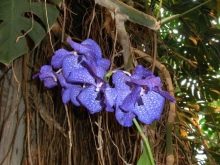
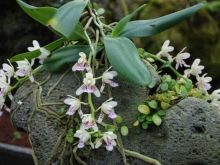
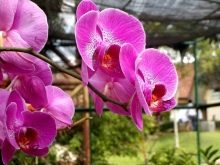
According to the method of arrangement of the stems, orchids are divided into:
- monopodial;
- sympodial.
The difference between them is that in monopodial orchids, nutrients are collected in the leaves of the plant, and in sympodial orchids, in shoots that grow in a horizontal direction. Indoor plants such as phalaenopsis, vanda, aerrangis, aggrekkum are referred to monopodial plants. These representatives of orchids have wide long leaves and a high peduncle, on the top of which there is a flower. These plants grow exclusively upward.
Sympodial representatives are cymbidium, oncidium, cattleya, cambria. Their main difference from monopodial plants is the presence of a pseudobulb, in which the plant accumulates nutrients. With proper care of the orchid, the functionality of the pseudobulb may decrease, since its purpose is to preserve the life of the plant under the extreme conditions in which the flower grows.
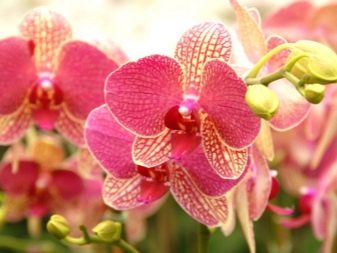
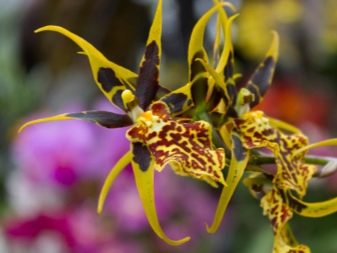
The structure of the flower is not much different from other flowering plants. The orchid has a root system, leaves, peduncles and inflorescences of incredible beauty. But the root system of the orchid is the most interesting organ of the plant. It does not quite fit the standard description of the root system of a potted flower. These aerial roots do not need soil and do not take root in it. All they need is water and sometimes top dressing. The spongy tissue covering the roots of the orchid absorbs water as well as the moisture that the air around the plant is saturated with. The soil for this plant is replaced by the substrate - tree bark or foam.
Long-term selection of terrestrial orchids has allowed many gardeners to grow this beauty at home and now any amateur florist can take care of her at home without the help of specialists and without creating special greenhouse conditions.

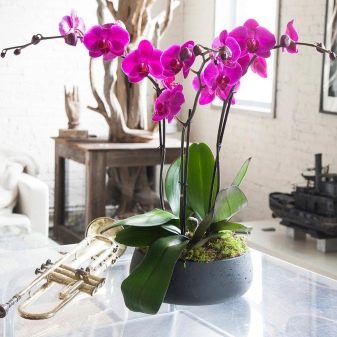
Types and varieties
The number of orchid species is in the tens of thousands, and each of them is unique and inimitable.Indoor plants are not inferior in beauty to wild representatives of orchids.
The most common indoor orchid variety is Phalaenopsis. This genus has about 70 plant species. For amateur flower growers who are just beginning to learn all the tricks of growing this flower, it is recommended to start with Phalaenopsis. This is the most common genus of orchids in our country, and therefore there will definitely not be any problems with finding advisers on the cultivation of this flower.

"Red Lip", "Sesame", "Phoenix" - orchid varieties that belong to the genus Phalaenopsis.
- "Red Lip" - this is an insanely beautiful snow-white flower with a crimson petal in the center. It belongs to monopodial orchids. Each peduncle usually produces 3 branches on which Red Lip flowers bloom. Flowers reach 10 cm in diameter, and the beginning of flowering usually occurs in February. Red Lip blooms for about 7-8 weeks, and with good care they can delight the grower even before the May holidays.
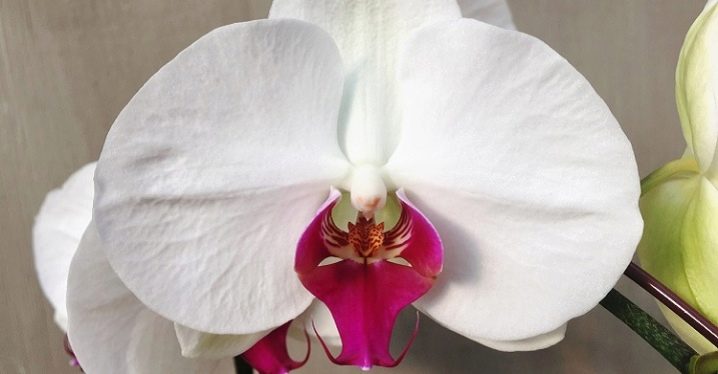
- "Phoenix" - another variety of phalaenopsis, which bloom almost constantly, namely 4-5 times a year. Its peduncles are not very long, only 25 cm.The color varies depending on the lighting and can be from purple to red. The flower is completely unpretentious and does not require special care.
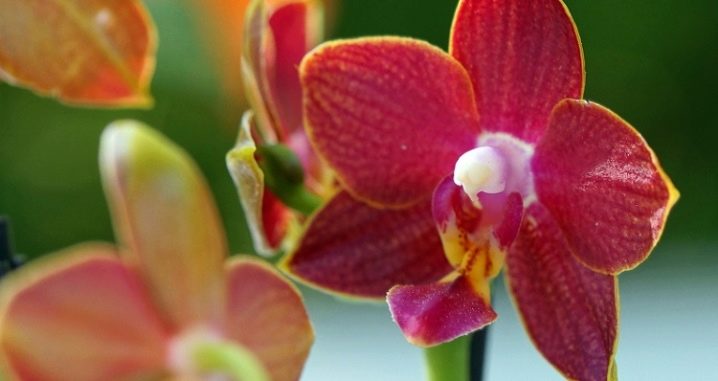
- "Sesame" - Dutch orchid hybrid. It blooms every six months and has a lifespan of about 15 years.
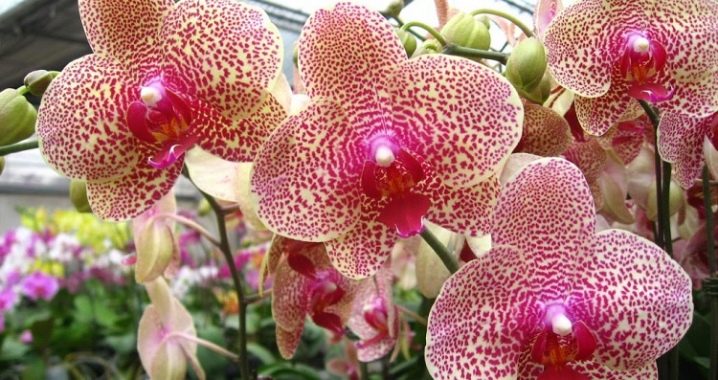
Orchid Bifrenaria is the most scented of the indoor orchids. This genus is represented by a number of varieties of flowers that are very similar in structure. Their side petals are longer than the central ones, and the spoon-shaped lip differs in color from the rest of the petals. The main color of the bud is yellow or white, and the central petal is burgundy or pink. Also, Bifrenaria can be distinguished from other orchids by its pseudobulb. It is most often pear-shaped.
In terms of growing and leaving, Bifrenaria does not create any special problems, and therefore we can conclude that it is clearly underestimated in the Russian market. Each Bifrenaria has its own unique smell, and it is not always pleasant. For example, "Bifrenaria Garrison" - an orchid smelling of lily of the valley, makes a very pleasant impression on the buyer, but "Tetragona Bifrenaria" has an unpleasant aroma, and therefore not all gardeners favor it.
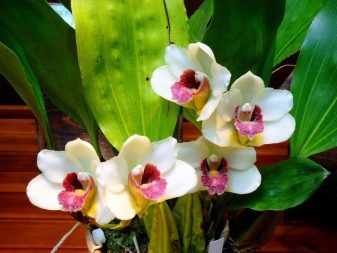
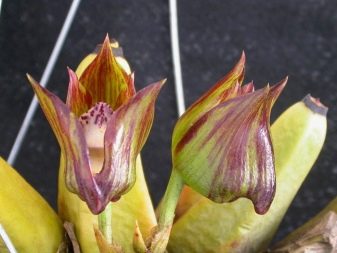
Whichever variety the florist chooses, it is best to buy seeds from trusted sellers and in specialized stores.
The orchid is not a cheap aesthetic pleasure, so some, trying to save money, buy seeds on various Internet sites. But even the most popular Chinese Internet site will not guarantee that the seeds purchased there will grow exactly the orchid variety that was purchased initially.
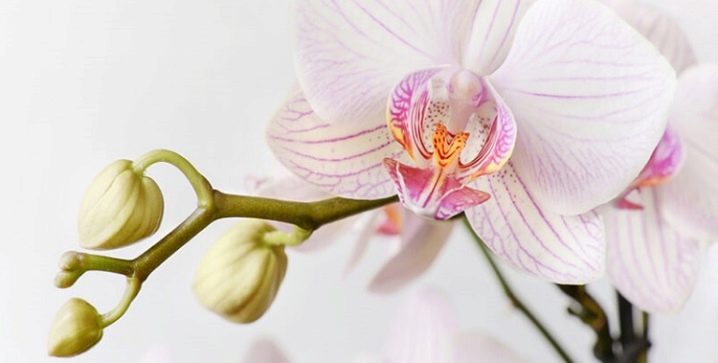
How to choose?
The Phalaenopsis orchid is considered the most unpretentious in terms of care, which for a novice grower will be an ideal starting plant at the beginning of the study of orchids. Before choosing and buying a flower, you need to ask the seller about the date of bringing the plant to the store. The longer the plant is on the counter, the worse its quality, as in flower shops very often hygiene rules are not followed.
If the orchid is in the store for about 3 weeks, you should inspect the conditions of its maintenance.
- The pots in which the orchid grows should be transparent and preferably perforated. Through them, the roots of the plant are clearly visible, and perforation improves oxygen access to the root system.
- The shelves on which the pots are placed must be clean and dry.
- The tray under the pot should also be dry.
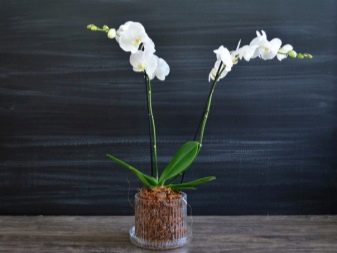
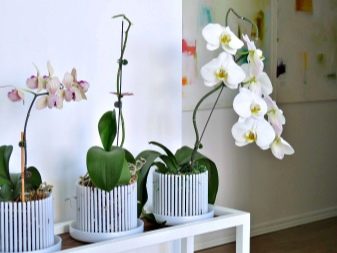
Most often, any orchid has a tag that carries information about the plant and its conditions. Otherwise, this information must be obtained from the seller. If the seller does not know anything about the conditions of detention, you can imagine the state of the plants in this store at the moment.
It is better to buy unsoldered flowers.They will quickly adapt to a new place.
All orchids are tropical inhabitants, and they are hard at low temperatures, so it is better to plan the purchase of this flower for the warm season, since it will not withstand a sharp temperature drop. Impatient flower growers are advised to stock up on bottles of warm water in winter to warm the newly purchased plant.

During the March flower frenzy, a lot of all kinds of flowers are often sold on the streets, among which you can also find orchids. Experts do not advise buying such specimens, since such plants will live for a relatively short time.
When choosing a plant, the first thing they pay attention to is the roots of the orchid, which can tell a lot to the gardener. By the green long ends of the roots, you can talk about the active phase of flower growth, which means that the care for it at this stage is correct and the orchid is healthy.
The sleep phase is indicated by green dots at the end of the root. It is important that the leaves are healthy and not dead. EIf there is no green dot, then such roots indicate a lack of moisture, and sometimes an excess of it. In this case, the root system can be black or gray. Such a flower is difficult to reanimate, so it is better not to purchase it.
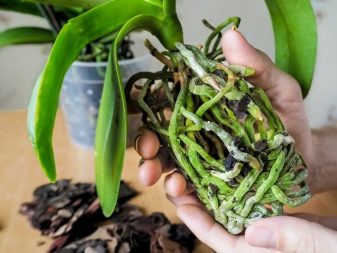
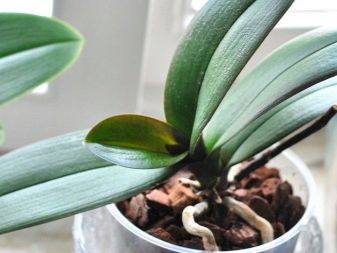
The leaves of a healthy orchid are dense, uniform green color with a glossy sheen. The leaves themselves should be at least 3 pieces.
Too bright leaves indicate excessive abuse of fertilizers, which will negatively affect both flowering and the immunity of the plant as a whole. It will be vulnerable to the occurrence of various diseases.
Many people try to buy an already blooming orchid for their home, because you can immediately see what the flowers look like on a branch, and in this case you will not have to wait for flowering. But here the buyer makes a mistake. An orchid takes a lot of effort to bloom, and it is quite possible that it has been on store shelves for a long time. If you still want to buy an orchid with flowers, then you need to take it at the initial flowering stage, when there are still unopened buds on it.
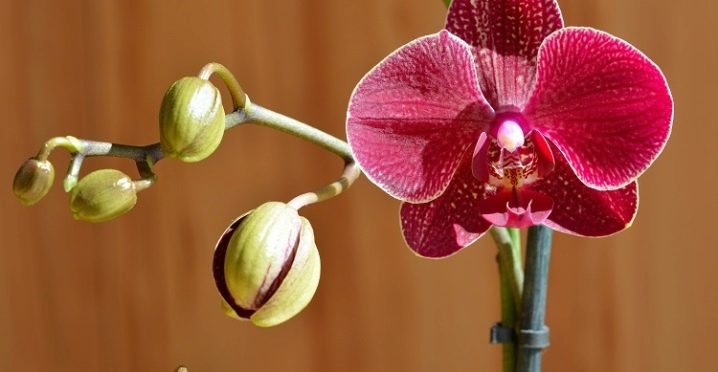
How to take care at home?
Buying an orchid without knowing how to grow it is at least wrong. If a novice florist bought it to decorate his home, but does not know at all how to care for a flower, he will simply throw a decent amount of money into the trash. Therefore, before making a purchase, you need to find out about the requirements of the plant and the rules for caring for it.
First of all, proper care needs to be organized for the roots of the orchid. They are an unusual system that has undergone a modification due to the climate in which the orchids used to live, namely in the humid tropical climate. Therefore, the roots of the orchid are airy, and not rooted in the soil. Moreover, orchids used these roots to cling to trees, but not for parasitic purposes. They used them only as a support.

Now for indoor orchids, various substrates are used as soil, the main component of which is often the bark of trees. Therefore, immediately after purchasing an orchid for its roots, it is necessary to purchase a substrate.
The constituents for the orchid substrate can be:
- peat;
- Styrofoam;
- moss;
- tree bark;
- charcoal;
- spruce and pine cones;
- coconut fiber.
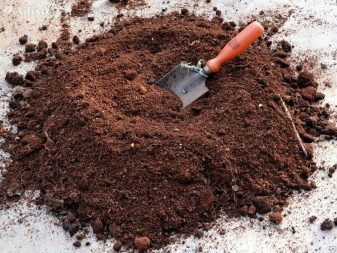
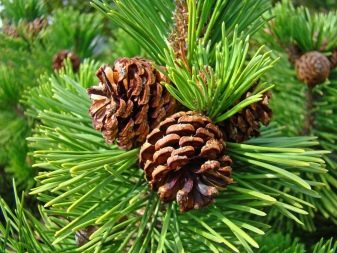
You can prepare the substrate yourself or buy it at any specialized flower shop. For phalaenopsis, flower growers often use pine bark as a soil. Synthetic substrates are less useful for the plant than natural ones, since polymers decompose under the influence of sunlight, which leads to the emergence of a free form of styrene. The roots of the orchid suffer from the resulting substance, and the plant can get sick and die.
There are a number of requirements for orchid soil that must be met if the florist wants to get the long-awaited flowers. The substrate must have such properties as:
- ease;
- looseness;
- moisture capacity;
- breathability.
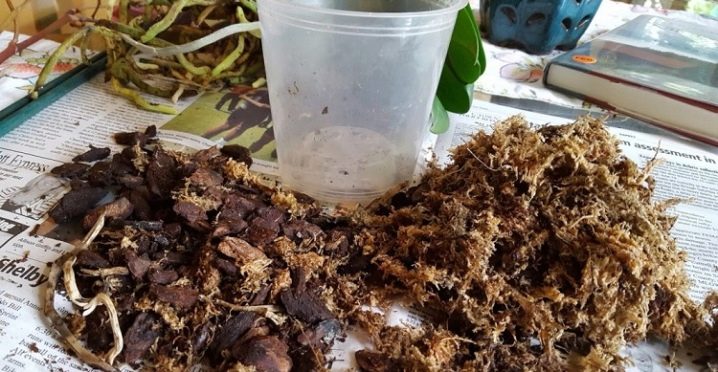
Also, when choosing the type of soil, you need to take into account the humidity in the room. With its high rate, pine bark is used in combination with coal, but not more than 5%. The average humidity of the air causes the addition of moss to the substrate in a ratio of 2 to 1 in order to increase the moisture content. Not only pine bark is used as a substrate. Oak is also great for this function. In addition, it does not need to be processed before use, which cannot be said about pine bark. The resin and harmful insects of the pine bark force the grower to heat it.
Peat is often used as soil for orchids. Its only drawback is its high acidity. To neutralize it, dolomite flour is added to the peat for a period of up to 14 days. When performing this procedure, peat becomes an ideal home for an orchid, since it is rather loose and is able to retain a large amount of moisture and air. Coconut fiber also meets all the conditions specified by the orchid.
It is capable of accumulating moisture, but does not yet cake and does not form lumps. Coconut fiber is also a source of minerals such as calcium and potassium.
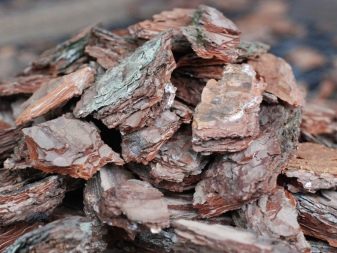
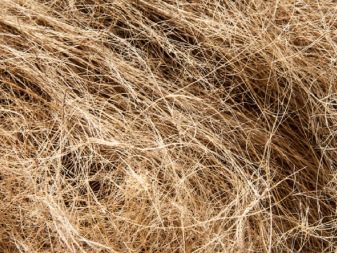
Lightweight foams are used as a substrate. They let air through well and do not harm the orchid. Charcoal is often added to the substrate. It prevents waterlogging of the soil and prevents it from souring. It also has antiseptic properties and prevents the appearance of putrefactive processes.
After choosing the optimal soil for the flower, you need to take care of its location on the window and stand. Orchids are light-loving plants. They need lighting for active growth, so a florist should get an incandescent daylight lamp in winter to illuminate his brainchild, which in winter can go into hibernation from lack of light. It is necessary to protect the flowers from direct sunlight and systematically spray the foliage and roots of the orchid.
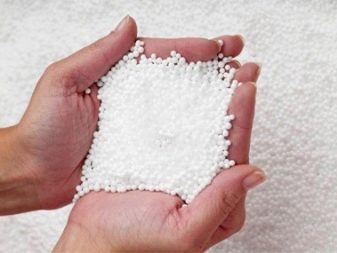
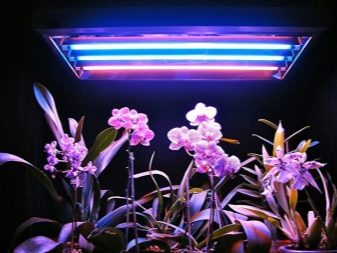
Orchids love light, but it should be diffused. It will not work to remove the orchid in the shade for a while. This is strongly discouraged from doing this, since the flower does not tolerate permutations.
It is necessary to find in advance the place where the diffused light will be provided to the orchid, and immediately from the first day put a pot with a flower there. According to the rules, it should be lit for 14 hours a day, and the shade is detrimental to many species of this plant.
Orchids, like any indoor plants, require attention and comfortable maintenance. The optimum temperature for an orchid is + 22- + 30 degrees. She does not like strong temperature fluctuations, so these fluctuations should not exceed 10 degrees. Also, this plant does not tolerate drafts, but it likes to be in a ventilated room.


As soon as the orchid sprouts a peduncle, you need to take care of the support for it. It must be installed in the pot very carefully, slightly pushing the roots of the plant apart. Several clamps are needed to secure the peduncle, and the higher the peduncle, the more you will need.
The stem must be secured almost immediately. As soon as it begins to grow horizontally and until it is stiff, it is lifted to the support and carefully, without damaging the shoot, secured with one or two clamps.
You should not put off the binding of the peduncle to the support for a long time, otherwise it will begin to grow stiff, and it will no longer be possible to attach the peduncle to the support with a clamp. You will have to first tie it loosely with a ribbon and every week gradually raise it higher and higher to the support.


Top dressing
An orchid in a room environment needs systematic feeding in order to replenish the amount of minerals. They can be washed out during watering, and the root system of the plant periodically draws useful substances from the substrate.
The feeding instruction assumes the fulfillment of certain requirements:
- during and after transplanting a flower, it cannot be fed;
- feeding should be carried out during the growing season of the plant;
- top dressing is not introduced into a flowering plant;
- an orchid weakened by diseases or pests is also not fed;
- the fertilizer is introduced carefully, trying not to burn the roots of the plant, usually after moistening the roots with water;
- spring and autumn fertilizers are administered once every 2 weeks, and in summer and winter - once a month.
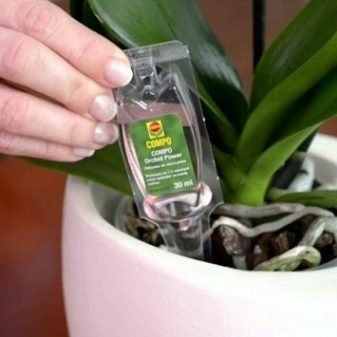
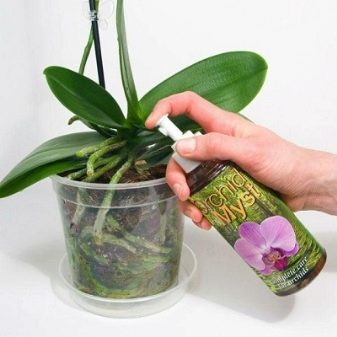
The composition of fertilizers for a flower should be rich in minerals - potassium and phosphorus. The minerals help stimulate the growth of the kidneys, which guarantees a beautiful color.
When buying a top dressing, you should study its composition:
- acidity should be between 5 and 7 pH;
- fertilizer for orchids should prevent an increase in the concentration of salt in the pot;
- stimulating the immunity of the orchid is the top priority of fertilization.
There are always universal flower feeds in stores, but experts say that they are quite saturated with mineral components, which may be excessive for an orchid. Therefore, they recommend buying fertilizers specifically for the orchid.
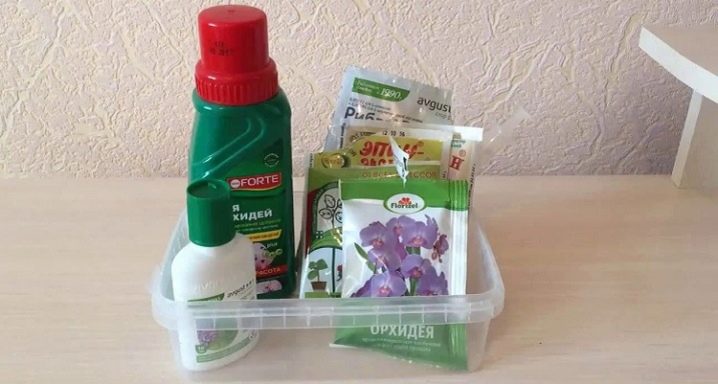
As for the names, the following preparations are suitable for the orchid:
- "Rainbow";
- "Garden of Miracles";
- "Ideal";
- "Oasis";
- Bona Forte.
They can act as a root top dressing, or they can be sprayed on the stems and leaves of the plant.
Root dressing is diluted in water according to the instructions. Then a container with a plant is slowly lowered into a basin filled with water, while irrigating its roots with a fertilizer solution. In this form, the pot is left for 10 minutes. Foliar dressing is usually planned on a rainy day, so that the sun does not burn wet orchid leaves with its rays. Using a spray bottle, the product is applied to green shoots and root shoots.
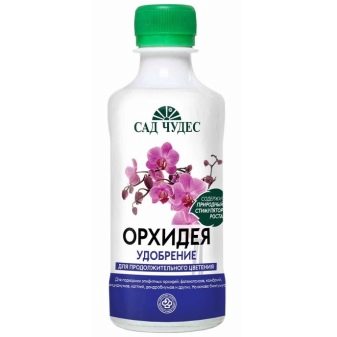
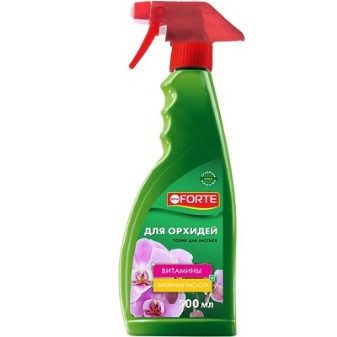
Experienced growers often become opponents of frequent feeding. They also try to reduce the dose of the drug indicated in the fertilizer instructions. In a liter of water, it is recommended to dissolve no more than 1 ml of such dressings as:
- Agricola;
- Pocon;
- Brexil Combi (iron-rich fertilizer);
- "Fasco";
- "Dr. Foley" (for spraying).
Orchid feeding is not a vital necessity. It may well develop without additional nutrition. It is nourished by the environment, but with the introduction of additional substances, the growth of its shoots is accelerated, and flowering occurs more often and longer.
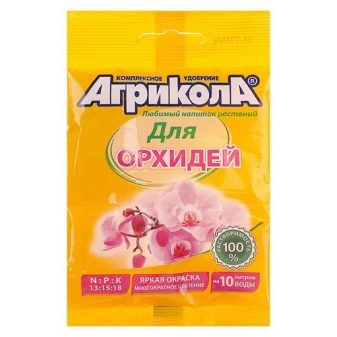
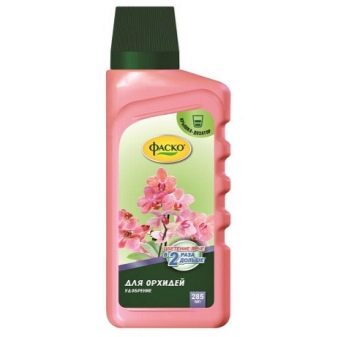
Watering
Air humidification is a must to create optimal conditions for an orchid to bloom. Watering should be moderate and systematic. Water should also be avoided in the center of leaf growth to avoid rotting. You need to water the orchid 2-3 times a week in the summer and once a week in the winter, and the soil should not be waterlogged. The water temperature should be 2 degrees warmer than the air temperature.
When watering, the water should fall directly on the roots of the plant.
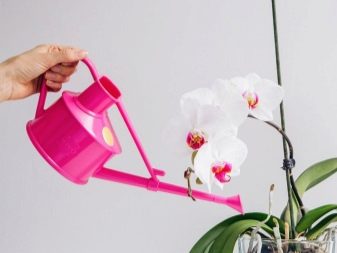
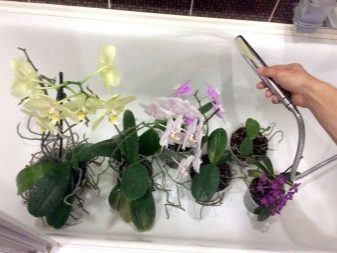
Fight disease
The orchid is resistant to many diseases, but some of them do not bypass it either. Most often, rot can be seen on an orchid. More correctly it is called brown bacterial rot. The reason for this may be banal waterlogging of the plant roots. To cure it, rot from the shoot and leaves is cut off with a sharp disinfected knife, capturing some healthy tissue. Then the cut site is treated with an antiseptic, for example, charcoal. The substrate is subsequently changed to a new one, and the pot in which the diseased plant was located is thoroughly washed and disinfected. This disease is most often found in the Phalaenopsis orchid.
Pafiopedilum and Cymbidium orchids are susceptible to disease that precipitates plant roots. Root rot occurs on these flowers due to the same waterlogging of the air, as well as at its high temperature. A solution of foundationol (0.2%) helps to cope with this disease, into which a pot with a diseased plant is immersed three times with a frequency of 3 weeks. Gray rot is a disease that occurs due to high humidity and low temperatures.To combat it, you need to remove all damaged areas, and treat the plant with fungicides.
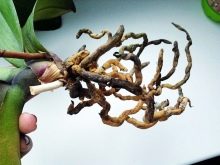


Pruning
Pruning a plant is done in order to rejuvenate and renew it. Cut off flower stems and flower stalks only if they are annuals. After flowering, they dry out and will no longer bring any benefit to the flower, except for new diseases and pests.
The orchid can also dry out only a part of the peduncle, which will no longer bloom. In this case, such a peduncle is cut off 2 cm above the sleeping bud. If suddenly a baby appears on the peduncle and takes root, then it must be separated from the mother plant.
If the orchid gets sick during flowering, then the branches with flowers are cut off in order to relieve the load on the plant. And, of course, they carry out pruning and removal of dead orchid lower leaves.
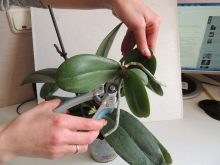
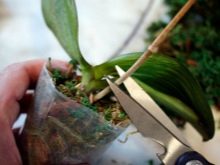
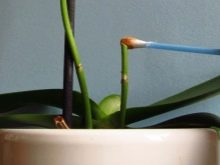
Reviews
The beauty of an orchid cannot but evoke positive responses from both flower growers and other connoisseurs of beauty. This flower can decorate both a room in an apartment and a wedding hall. All negative reviews about the orchid arise only from ignorance of the elementary rules for the content of this flower. Orchids are completely unpretentious to care for, and experienced flower growers know this very well.
Sometimes there are negative reviews, argued by the inflated price of orchids. But, I think, it is justified by the fact that this flower is the result of a rather long and painstaking work of a florist, and besides, flowers that delight with their beauty only once every six months simply cannot be cheap.
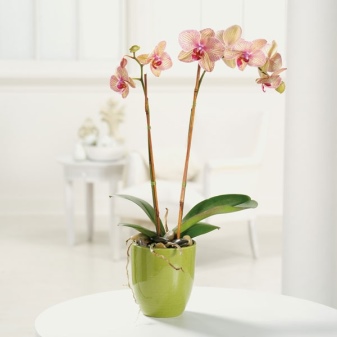
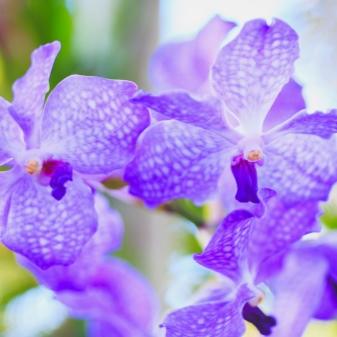
In the next video, you will find a guide to caring for orchids from A to Z.































Thank you very much for the complete information on growing orchids. I love these extraordinary flowers very much. I always admire their diversity. How exotic the room looks where these excellent orchids bloom! I would like to know how they grow in nature.
The comment was sent successfully.